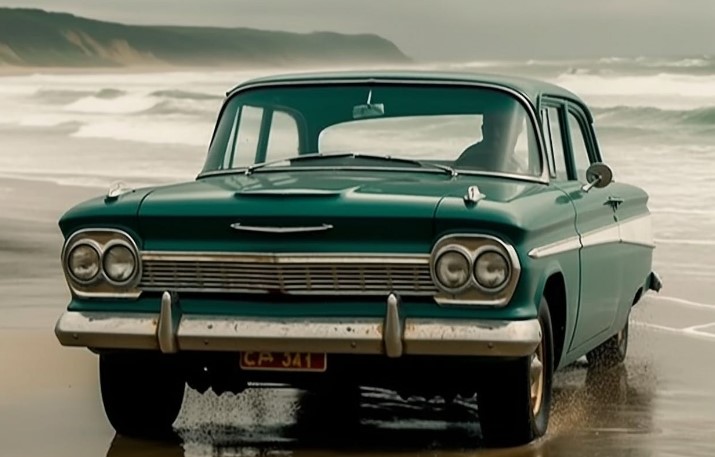
The 2023 edition of ACEA’s ‘Vehicles in use’ report provides an extensive overview of the motor vehicle fleet on the road in the European Union – covering passenger cars, light commercial vehicles, medium and heavy commercial vehicles, and buses.
Per country, the Vehicles in use report shows the number of motor vehicles in use for each vehicle type and how the fleet has evolved in the last decade.
It also provides valuable insights per vehicle segment for each European country, such as the average age (as well as the year of first registration), the share of each fuel type, and the number of vehicles per 1,000 inhabitants.
This 2023 edition covers the 27 member states of the European Union, plus the EFTA countries (Iceland, Norway and Switzerland), as well as the United Kingdom.
Fleet size
- In 2021, the EU passenger car fleet grew by 1.2{7b5a5d0e414f5ae9befbbfe0565391237b22ed5a572478ce6579290fab1e7f91} compared to 2020, with nearly 250 million cars on the road in total. With the exception of Slovenia (-4.1{7b5a5d0e414f5ae9befbbfe0565391237b22ed5a572478ce6579290fab1e7f91}), all EU countries expanded their car fleet, with the highest growth seen in Slovakia (+8.2{7b5a5d0e414f5ae9befbbfe0565391237b22ed5a572478ce6579290fab1e7f91}) – see page 4.
- 29.5 million vans are in circulation throughout the European Union, half of which can be found in three countries: France (6.3 million vans), Italy (4.3 million) and Spain (3.9 million) – see page 5.
- There are more than 6.4 million medium and heavy commercial vehicles on EU roads, up 3.2{7b5a5d0e414f5ae9befbbfe0565391237b22ed5a572478ce6579290fab1e7f91} compared to 2020. With more than 1.2 million trucks, Poland has the largest truck fleet by far – see page 6.
- 714,008 buses are in operation across the European Union, almost half of which can be found in three countries alone: Poland (126,547), Italy (100,199) and France (94,523) – see page 7.
Average age
- EU cars are now on average 12 years old. Greece and Estonia have the oldest car fleets, with vehicles 17 years old. The newest cars can be found in Luxembourg (7.6 years) – see page 10.
- The average age of light commercial vehicles in the EU is 12 years. Of the EU’s four major markets, Italy has the oldest van fleet (14 years), followed closely by Spain (13.6 years) – see page 11.
- Trucks are on average 14.2 years old in the European Union. With an average age of 22.7 years, Greece has the oldest truck fleet, while the newest ones can be found in Austria (6.6 years) and Denmark (7.5 years) – see page 12.
- Buses on EU roads are on average 12.7 years old. Aged more than 20 years, Romanian buses are the oldest in the region. Only eight countries in the European Union have a bus fleet that is less than 10 years old – see page 13.
Fuel type
- Despite the strong increase in sales seen in recent years, electrically-chargeable cars (battery electric and plug-in hybrid) still make up only 1.5{7b5a5d0e414f5ae9befbbfe0565391237b22ed5a572478ce6579290fab1e7f91} of the total EU car fleet. In the EU, only three countries have a share of battery electric cars higher than 2{7b5a5d0e414f5ae9befbbfe0565391237b22ed5a572478ce6579290fab1e7f91} – see page 14.
- Diesel-powered light commercial vehicles are still dominant in the EU with 91{7b5a5d0e414f5ae9befbbfe0565391237b22ed5a572478ce6579290fab1e7f91} of the fleet running on diesel and just 0.6{7b5a5d0e414f5ae9befbbfe0565391237b22ed5a572478ce6579290fab1e7f91} of vans being battery electric – see page 15.
- 96.4{7b5a5d0e414f5ae9befbbfe0565391237b22ed5a572478ce6579290fab1e7f91} of all trucks in the European Union run on diesel, while petrol fuels 0.5{7b5a5d0e414f5ae9befbbfe0565391237b22ed5a572478ce6579290fab1e7f91} of the fleet. Only 0.1{7b5a5d0e414f5ae9befbbfe0565391237b22ed5a572478ce6579290fab1e7f91} of trucks on EU roads have a zero-emission powertrain – see page 16.
- Diesel buses account for 92.5{7b5a5d0e414f5ae9befbbfe0565391237b22ed5a572478ce6579290fab1e7f91} of the EU fleet, with only 1.3{7b5a5d0e414f5ae9befbbfe0565391237b22ed5a572478ce6579290fab1e7f91} being battery electric and 1.8{7b5a5d0e414f5ae9befbbfe0565391237b22ed5a572478ce6579290fab1e7f91} hybrid electric. However, significant shares of electric buses can be found in the Netherlands (14.5{7b5a5d0e414f5ae9befbbfe0565391237b22ed5a572478ce6579290fab1e7f91}) and Luxembourg (7.8{7b5a5d0e414f5ae9befbbfe0565391237b22ed5a572478ce6579290fab1e7f91}) – see page 17.
Motorisation rates
- The European Union counts 567 passenger cars and 83 commercial vehicles per 1,000 inhabitants – see page 18.
- Luxembourg has the highest car density in the EU (698 per 1,000 people), while Cyprus has the highest density of commercial vehicles (135 per 1,000 inhabitants). By contrast, the lowest density of cars can be found in Romania (396). Lithuania has the lowest density of commercial vehicles (49) – see page 19.
- In Latvia, nearly 43{7b5a5d0e414f5ae9befbbfe0565391237b22ed5a572478ce6579290fab1e7f91} of all households do not own a car, while almost 32{7b5a5d0e414f5ae9befbbfe0565391237b22ed5a572478ce6579290fab1e7f91} of French families have two passenger cars – see page 20.
The 2023 edition of ACEA’s ‘Vehicles in use’ report provides an extensive overview of the motor vehicle fleet on the road in the European Union.
Downloads
Copyright notice
Reproduction of (parts of) this information or related documents is not permitted without the prior written consent of ACEA. Whenever reproduction is permitted, ACEA shall be referred to as source of the information.
Disclaimer
This information was presumed to be correct at the time of publication. However, ACEA is not responsible for any inconsistencies or errors in the data.







More Stories
Tips for Negotiating the Best Deal When Selling Your Car
5 Women That Shaped the Automobile and the World Around It (and Us)
Automobile retail sales see double-digit growth in February on robust demand